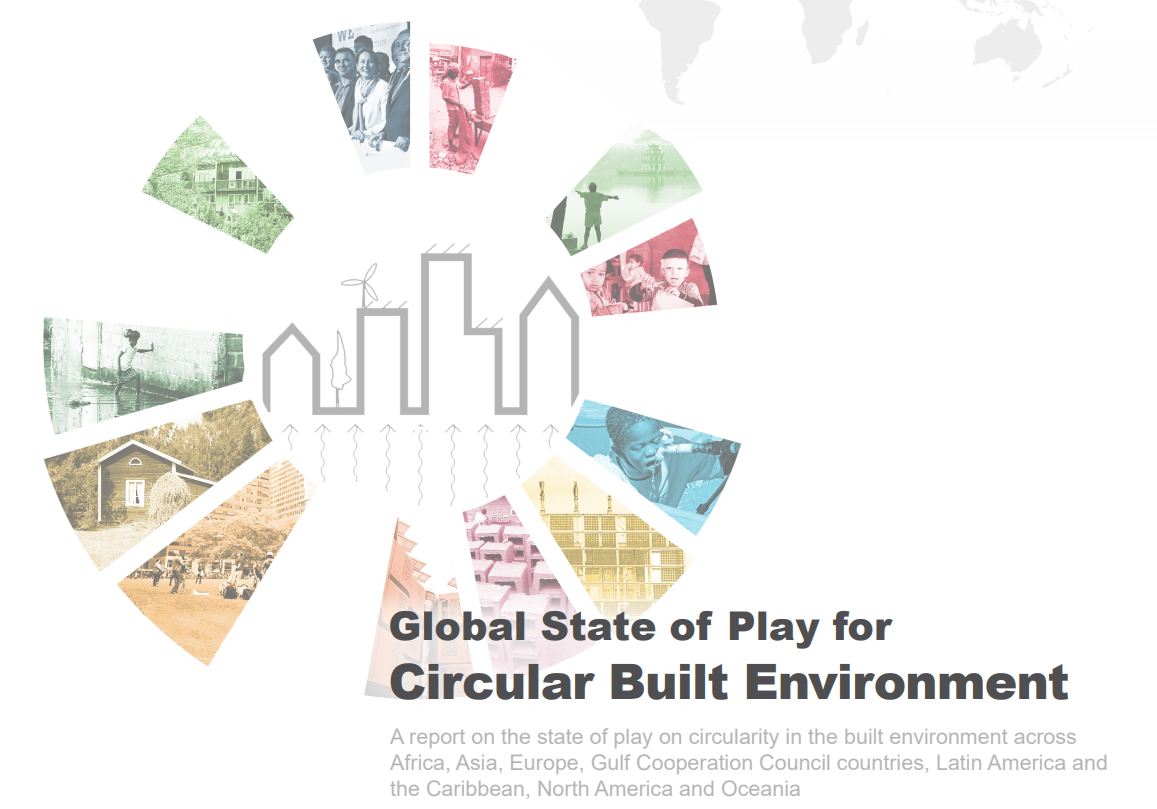From Linear to Circular - First Global Mapping of Circularity in the Built Environment

The world is becoming increasingly urbanised, particularly in the Asian and African regions. Building stock is expected to double by 2050 in these regions. Global material use is expected to more than double by 2060, and the materials used in the building and construction sector will comprise a third of this rise. Greenhouse gas (GHG) emissions will also increase as a result of growing material use. It is estimated that the total waste generated in the world will double from nearly 2 billion tonnes in 2016 to about 4 billion tonnes by 2050.
Such trends call for an urgent questioning of current ways of operating the built environment, as present practices are locked into a linear way of planning, designing, building and operating the built environment. Circular approaches present a viable alternative to underpin the transition to a decarbonised world while at the same time meeting the goals of the 2030 Agenda for Sustainable Development.
The One Planet Network Sustainable Buildings and Construction programme initiated a study to understand the current state of play with regard to circularity in the built environment in the seven different geographic regions: Africa, Asia, Europe, Gulf Cooperation Council (GCC) countries, Latin America and the Caribbean (LAC), North America and Oceania. This is the first in-depth study ever conducted on the subject. In addition to the seven regional outlooks, a global report has been produced to summarise and compare the state of play regarding circularity in different regions.
Ten recommendations to boost a transition from linear practices to a more circular built environment are presented based on the study. These include the following:
- There is an urgent need to think and act differently, starting now. The current lock-in approach needs a concerted shift in thinking from linear to circular, and this should be a priority as governments consider catalysing economic recovery packages in a COVID-19 world.
- Procurement processes must be revised. Procurement practices can drive supply chains and the transition from product to service procurement or mix of products and services will result in sustainability outcomes.
- New business models can boost the transition. Business models that encourage cross-sectoral collaborations such as between IT and the built environment to support building passports or track and trace materials for reuse or repurpose also need to consider qualifications criteria for the reuse of construction and deconstruction waste. Supply and demand needs to be balanced.
The study also emphasizes the role of monitoring and reporting to ensure that we stay on track and reach the goal of living and working in a world that enables efficient resource use, has little or no environmental impact, and ensures a just society. The SDGs can assist in monitoring and reporting as the foundational principles of circular economy and sustainability are the same.
See all the State of Play for Circular Built Environment reports here
Download the reports by region:
- Africa
- Asia
- Europe
- Gulf Cooperation Council countries
- Latin America and the Caribbean
- North America
- Oceania
Sustainable Buildings and Construction Programme
The Sustainable Buildings and Construction Programme (SBC) is one of the six thematic programmes under the One Planet network, which was formed to 10-Year Framework of Programmes on Sustainable Consumption and Production (SCP). The SBC Programme aims at improving the knowledge of sustainable construction and to support and mainstream sustainable building solutions. Through the programme, all major sustainable construction activities can be brought together under the same umbrella. The work involves sharing good practices, launching implementation projects, creating cooperation networks and committing actors around the world to sustainable construction. The goal of the programme is to promote resource efficiency, mitigation and adaptation efforts, and the shift to SCP patterns in the buildings and construction sector.

